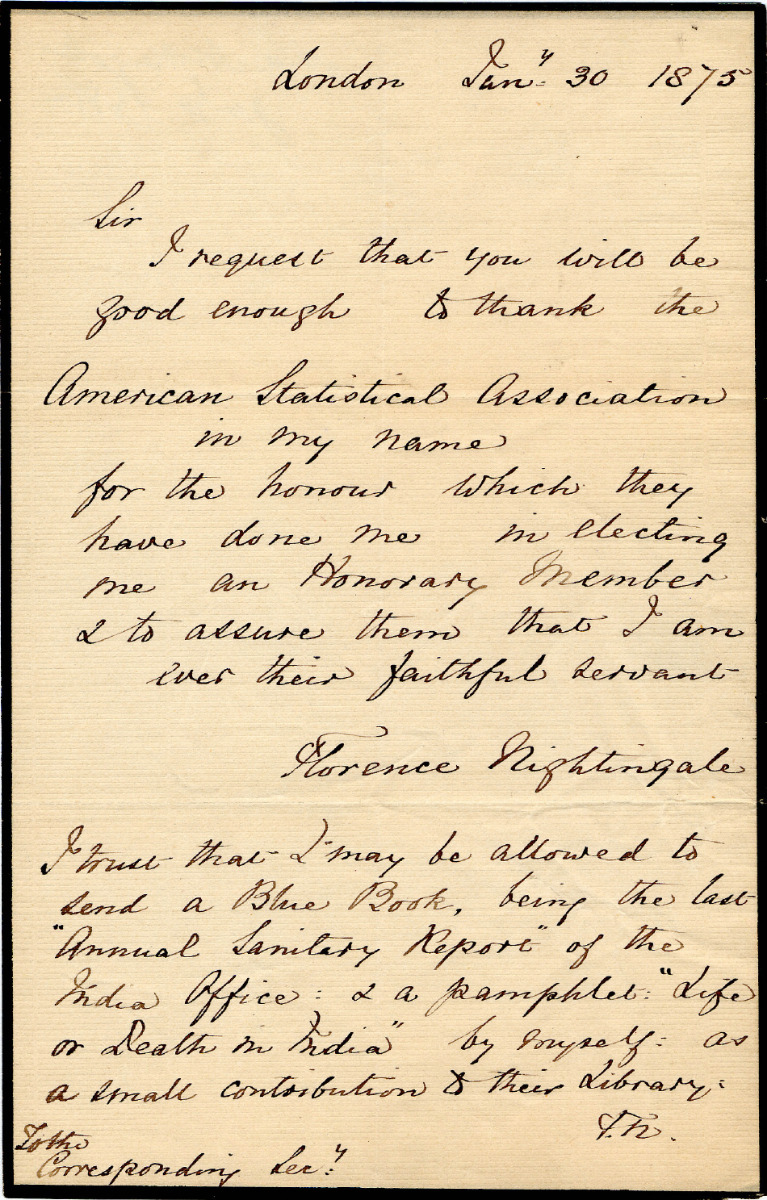- About MAA
- Membership
- MAA Publications
- Periodicals
- Blogs
- MAA Book Series
- MAA Press (an imprint of the AMS)
- MAA Notes
- MAA Reviews
- Mathematical Communication
- Information for Libraries
- Author Resources
- Advertise with MAA
- Meetings
- Competitions
- Programs
- Communities
- MAA Sections
- SIGMAA
- MAA Connect
- Students
- MAA Awards
- Awards Booklets
- Writing Awards
- Teaching Awards
- Service Awards
- Research Awards
- Lecture Awards
- Putnam Competition Individual and Team Winners
- D. E. Shaw Group AMC 8 Awards & Certificates
- Maryam Mirzakhani AMC 10 A Awards & Certificates
- Two Sigma AMC 10 B Awards & Certificates
- Jane Street AMC 12 A Awards & Certificates
- Akamai AMC 12 B Awards & Certificates
- High School Teachers
- News
You are here
Mathematical Treasure: Letter by Florence Nightingale
Florence Nightingale (1820–1910) made significant contributions to statistics. In 1856 she worked as a nurse in a British military hospital in Turkey, where she collected large amounts of data. Her analyses revealed that sanitary practices were a major culprit for the mortalities in the hospital. She drew on the data to help with decision-making with respect to hospital practices. Living in a time before the availability of computers, she created beautiful visualizations of circular yearly data in a coxcomb diagram. The coxcomb represented the months of the year and the proportion of data within each month.

Nightingale has long been touted as a role model for female statisticians. For her tremendous contributions to the field of statistics, the American Statistical Association (ASA) elected her as an honorary member on October 16, 1874. A copy of her response letter, dated January 30, 1875, still proudly hangs at the ASA headquarters in Alexandria, VA. The original response is part of the ASA records held by Iowa State University Special Collections and University Archives.
For more on Nightingale's statistical work, see “Mathematical Treasure: Florence Nightingale’s Statistical Report on British Army Mortality,” Convergence (February 2023), and Charlotte Bolch and Beverly Wood, "Seeing and Understanding Data: A Mini-Primary Source Project for Students of Statistics," Convergence (December 2018).
Anna Bargagliotti (Loyola Marymount University) and Rebecca Nichols (American Statistical Association), "Mathematical Treasure: Letter by Florence Nightingale," Convergence (September 2019)




